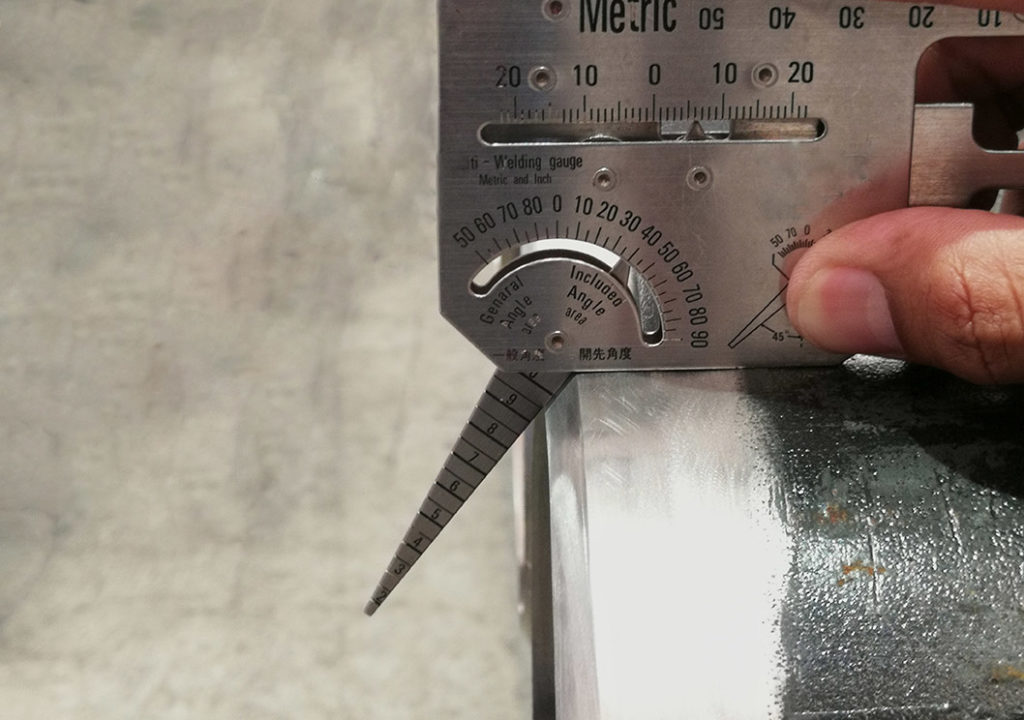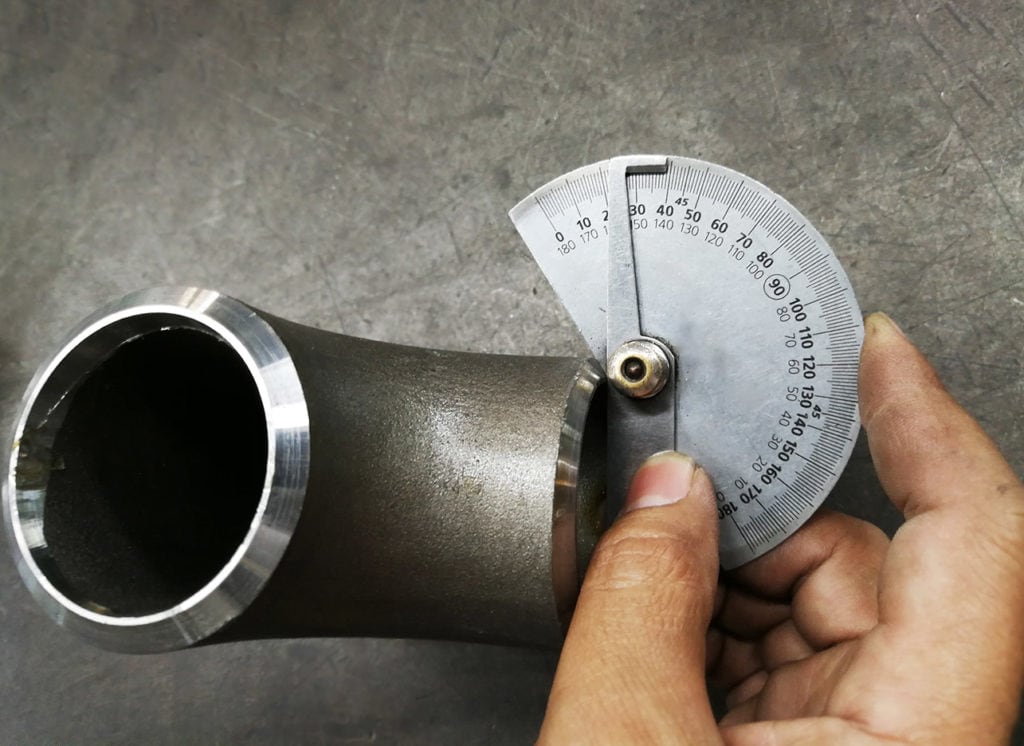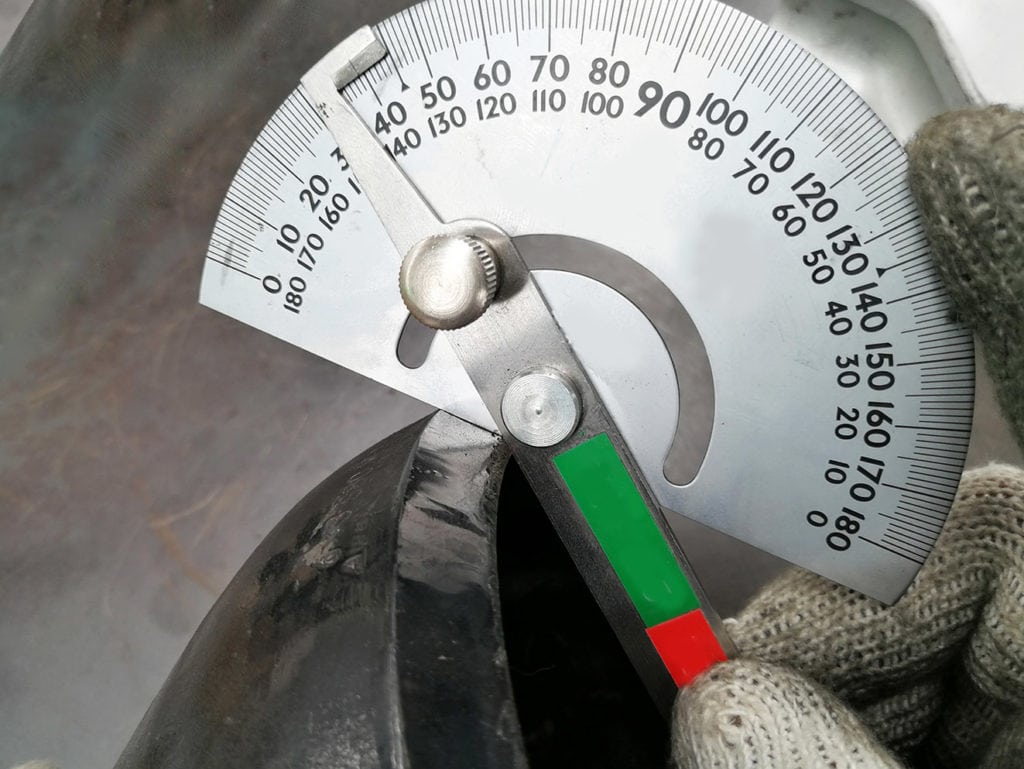How to Bevel Pipe for Welding: A Pipe Beveling Guide
Last Updated on

If you have been skipping the beveling process when welding your pipes, you have equally been compromising your weld’s quality and wasting too much time on your tasks. Sometimes, when fusing two items, you will have to cut an angle on the edges to fit each other perfectly. That is what beveling does. In pipe welding, beveling occurs when the welder cuts off some parts at the edges of the two pipes to be welded to streamline them, eventually creating a seamless joint.
Bevel Types
After preparing the pipes for beveling, cut the edges to form a “V” between them. V is just a default label to describe the design being created. Others include “K,” “Y,” and double “V.” Since pipes vary in thickness, sizes, material, and other features, the resultant “V” also comes in different shapes and angles.
Mostly, welders measure a 37.5° angle on the tubes’ faces, which creates a 75° angle between them after cutting.
I-Type Joint Butt
This joint is not really considered a bevel. In this case, you do not have to calculate the angles as explained above. Just connect the two pipes in parallel.
V-Bevel
The name comes from the shape that forms after beveling. To create the V-Bevel, cut the pipe from top to bottom at an angle of 45°.
J-Bevel
In this case, the bevel needs to curve at the bottom. For that reason, a portion of the material will be left at the weld. Creating a J-Bevel is demanding, but they form more consistent bonding layers.
X-Bevel
It’s quite similar to V-Bevels, only that, in this case, you will remove material from both sides. Also, the angle of removal is half of V-Bevel’s, making the resultant joint more robust.
Single U-Bevel
They are the most expensive to make and manage but form the strongest joints. You might want to use the automated stationery beveling machine for this.

The 4 Methods Used in Beveling
1. The Hand Grinding Method
Using a hand grinder is the cheapest of the four methods but also the riskiest. It is not ideal for beginners, and even expert welders should only resort to it when it’s the only option available. This method is also time-consuming, and you will end up with inconsistent bevels. The myriad of inconsistencies and mess associated with the hand grinder reflect on poor quality welds.
2. Using A Torch Or Plasma Cutter
Even though this method is a little better than using the hand grinder, you will still end up with inconsistent bevels. The technique is also selective since it cannot create designs like the J-Bevels. You will also have to complete some steps using your hands, like making the flat land at the end of the pipe. The chaos and risks involved in this process are very high, making it riskier for novice welders.
3. The Portable Beveling Machine
The greatest highlight of using this machine is its portability. It is safer than the two manual techniques mentioned above. The portable beveling machine has several installations and settings, allowing it to create various slopes on the pipes. It also saves time now that you can take it to the pipe. Due to its portability feature, it is convenient for projects in construction sites and maintenance projects. The major downside is it doesn’t suffice when high production is needed. Also, when beveling, be cautious with the flying chips and electrical cables around.
4. Stationary Beveling Machines
This is the best and most flexible of the four options because it is easy to operate and produces high-quality workpieces. You can create any shape and design, which is a vantage point to any manufacturer since clients gravitate towards products that satisfy both functionality and aesthetics.
It is fast, automated, supports high production, and requires low maintenance. The method is also safe, pocket-friendly.

5 Factors to Consider When Beveling
1. Degree of Angle
You should use different applications for different angles of beveling. The most important rule to remember is that the degree, notwithstanding, always maintains the tolerance level’s angle.
2. The Bevel’s Length
A bevel’s length, in this case, refers to the material you need to remove so that the weld bead gets into the fabrics. A consistent length allows the welder to operate smoothly, making a quality end product.
3. Speed
The beveling method you choose should ensure an absolute fastest cycle during the procedure.
4. Avoid Heat
Metal is originally an amalgamation of different alloys like iron, magnesium, or chromium. These alloys are responsible for the structural characteristics that these metals bear. Should you expose the metals to heat while working on them, you risk changing the microstructural features, meaning the metal can change into some other material with different characteristics. Suffice to say, your project will be a flop.
5. Health First
The need to protect yourself when welding cannot be emphasized enough. The unhealthy fumes emitted during the process are harmful to the body meaning all welders need to put on their protective gears when working.

Bevelling vs. Chamfering
Both cases refer to the edge between two faces of a tube. The difference is that a chamfer connects the two faces at a 45° angle, while the bevel slope can operate at any angle except 45°–90°.
Final Thoughts
Using beveling tools improves your competitive advantage in the market because your pipes will be of great quality and aesthetically pleasing. The tools for pipe beveling are handy, speedy, and safe to the operator. Beveling proves how prior preparation and cleaning determine successful welding since a beveled pipe directly determines the final weld’s overall quality.
You might also like:
Featured Image Credit: Greeneries, Shutterstock
